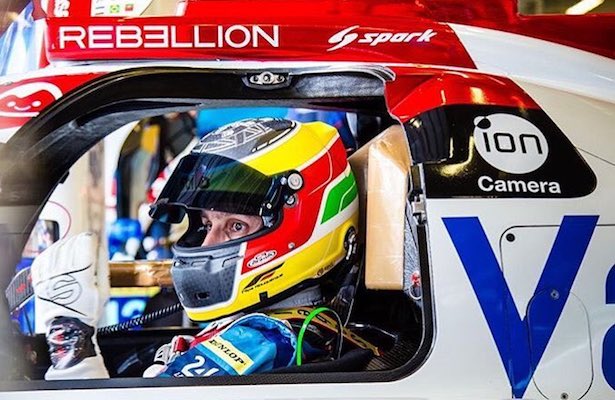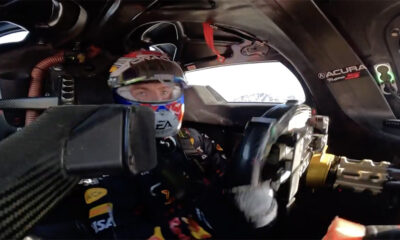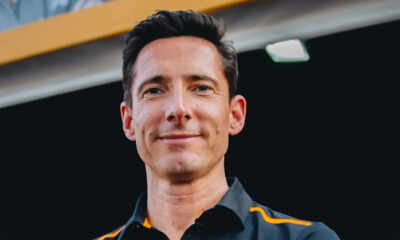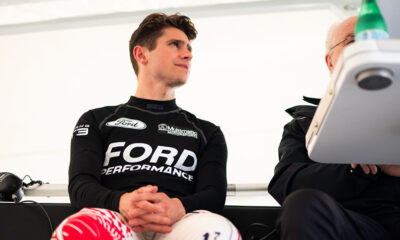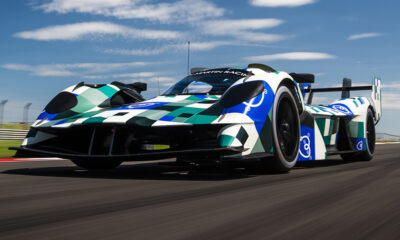Filipe Albuquerque says he’s enjoying a busy season so far that’s allowed him to become the first driver to race three of the new-for-2017 LMP2 chassis in prototype competition worldwide.
While his season has focused on the European Le Mans Series, the ex-Audi LMP1 ace is also competing in several endurance races in the U.S. as well as the 24 Hours of Le Mans and a one-off FIA World Endurance Championship outing last weekend.
His season started with Action Express Racing at the Rolex 24 at Daytona and Mobil 1 Twelve Hours of Sebring, piloting the Cadillac DPi-V.R, based on the Dallara P217 chassis.
“It’s been quite a nice season so far,” Albuquerque told Sportscar365. “The Action Express deal was the first one to get secured because after driving with them last year they were happy with the job, so it was nice to drive the first DPi with Cadillac.”
The Portuguese driver’s primary program, however, has been with United Autosports, sharing a Ligier JS P217 Gibson in the ELMS and Le Mans with young drivers Will Owen and Hugo de Sadeleer, having claimed victory in the opening round at Silverstone in April.
“I was not expecting, and I think the team was not expecting, to be winning so early in the ELMS,” he said.
“Our winter season didn’t go as well as we’d have liked because we had too many rainy days in the pre-season and our rookie drivers needed more miles. In the end, they did an amazing job, and we won the first race.
“At the moment it’s going well because I’m leading the North American Endurance Cup and second in LMP2 in ELMS.
“Le Mans was a bit of a shock for everyone that we didn’t have the pace with the Ligier, which was just a question of the aero package.”
Ticking off the third of four homologated chassis was possible when Albuquerque joined Vaillante Rebellion for the Six Hours of Nürburgring, to race the team’s Oreca 07 Gibson.
Having served as a substitute for Nico Prost, who was competing in the Formula E double-header in New York City, Albuquerque helped take the No. 31 car to a runner-up class finish in last weekend’s fourth round of the WEC season.
“This was a last-minute call with Rebellion, but I was quite happy to have it because I like the WEC, it’s a competitive car, Rebellion is a well-known team, and I was curious to drive the Oreca for the first time,” he explained.
“The Oreca seems a little bit more agile [than the Ligier], and that’s the only thing I’ve felt so far, but I don’t feel miles away in terms of balance.
“At the moment, I’ve managed to have better balance in the Ligier than the Oreca. The Ligier is very strong on tire degradation as we saw at Silverstone and a bit at Le Mans, because we could do four stints quite easily and the Orecas were doing three stints.”
However, Albuquerque says the main differences between cars has been comparing the DPi to the standard LMP2 car, most notably with very different engines.
All LMP2 cars run the spec 4.2-liter Gibson V8 this season, while DPi regulations allow manufacturers to utilize their own powerplants, with Cadillac opting for a 6.2-liter normally aspirated V8.
“The Cadillac is totally different from the Gibson engine,” Albuquerque explained. “It revs much less, especially now with the Balance of Performance restrictor, so it’s very low revs and has more torque.
“This makes the car much more quiet and nicer to drive, and the Gibson is the opposite. You’re on 9,000 revs and the range of the engine is only on the top, so you need to always be up there.
“At Le Mans, it was mentally hard for driving because you go a long time at 9000 or 8500 revs and this gets kind of tiring, but in the end it’s the same for everyone. In that way, the Cadillac is easier on yourself.
Furthermore, he says the differing regulations with regards to gear ratios also make a big difference between the two formulae.
“In DPi, you can adapt the gears to every track because of the rules, but in Europe, you have first, second and third which are mandatory for everywhere you go,” he added.
“Ligier, Oreca and Dallara choose which gears they have and then you can choose medium, long or short, but there is not a big difference. In the DPi with the American rules, you can play with it a little bit more.”
After winning the Sahlen’s Six Hours of The Glen earlier this month, Albuquerque will return stateside for the Motul Petit Le Mans in October but faces a decision for the 2018 season-opener at Daytona, with options both at United Autosports and Action Express for that race.
Albuquerque said he has no contract yet for the 24-hour race in January, and said he could consider offers from both teams, while also looking for a full-season entry in either WEC or the WeatherTech Championship.
“For next year, I’m completely free at the moment,” he said. “I’m not saying that I’m not talking, but at the moment I’m just [focusing on] this season.
“One thing that I’m looking for is to be doing Daytona and Sebring, because they don’t clash with anything else, and then I want a full-time role in a good championship or with a good manufacturer.
“I’m having a great experience this year with Action Express as a third driver and as well with United with the Ligier. I want a full-time role in IMSA or in WEC, and that would be the ultimate [goal].”

